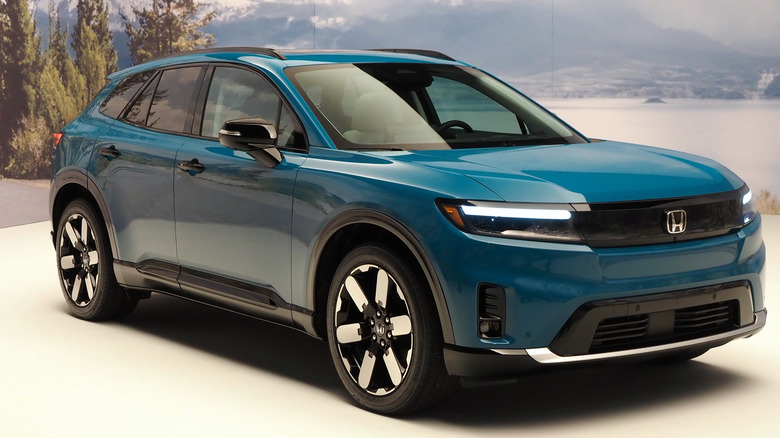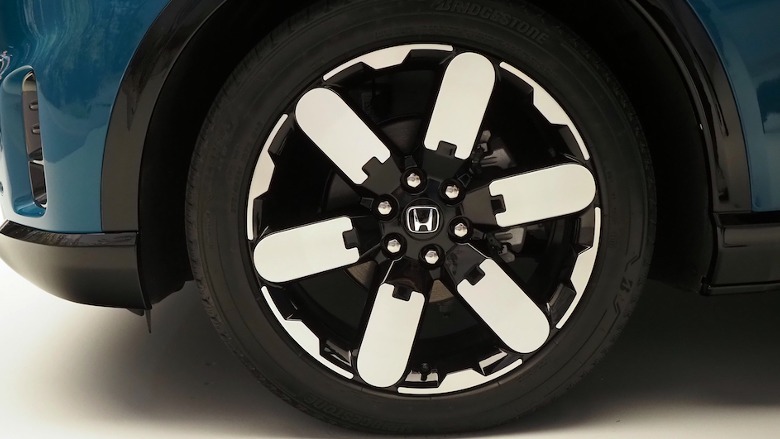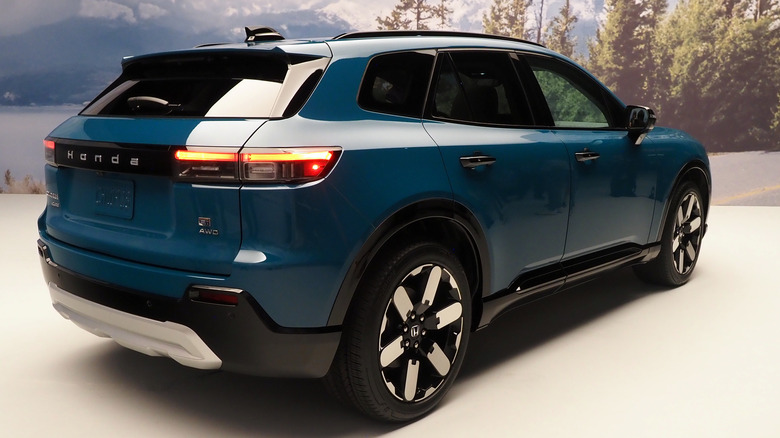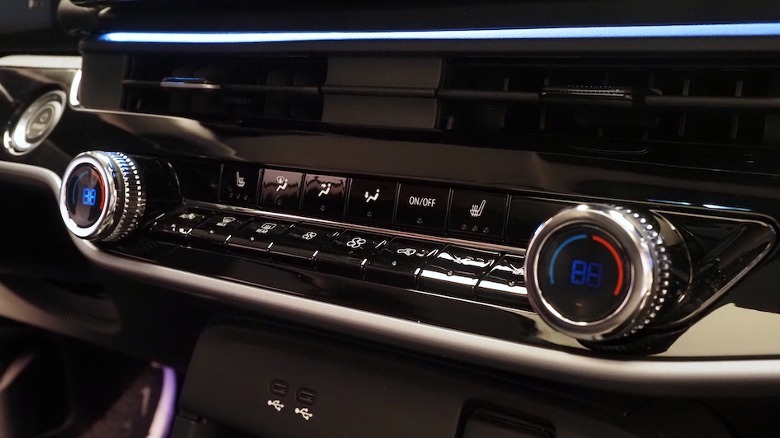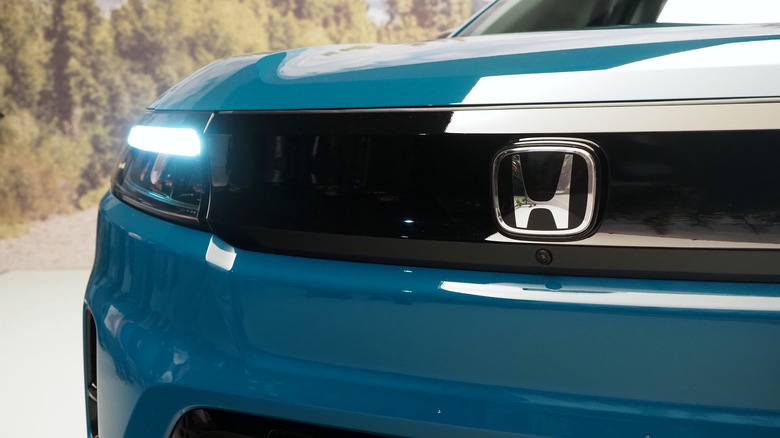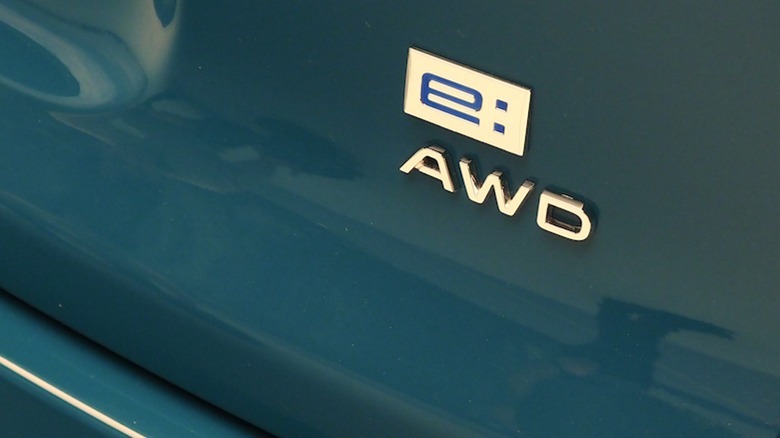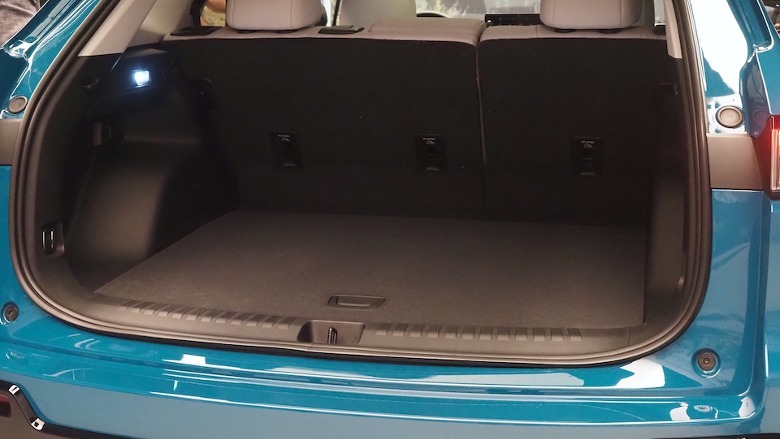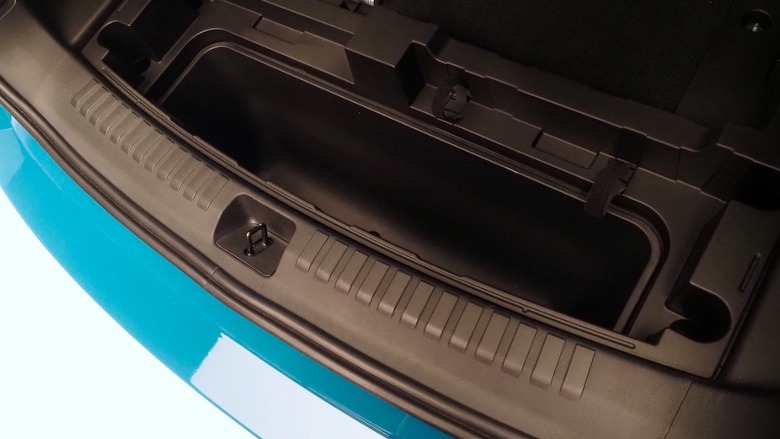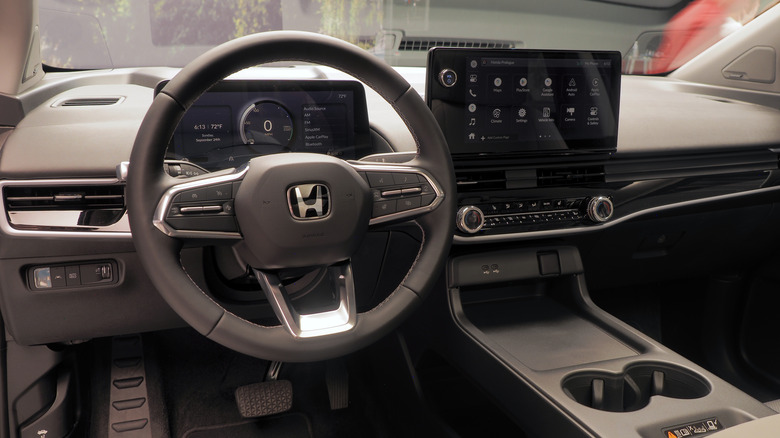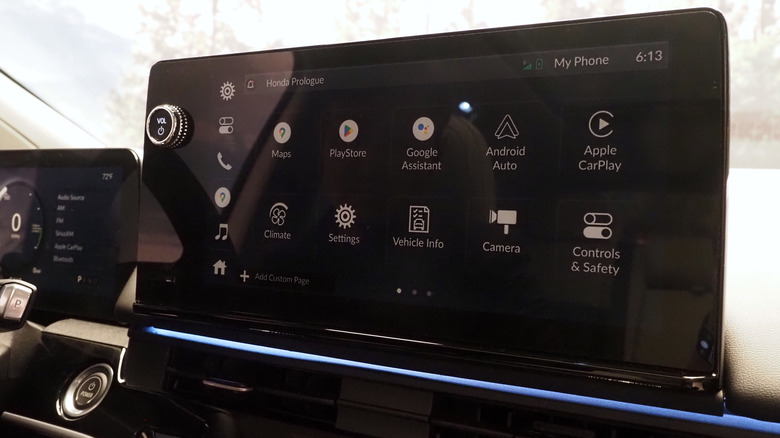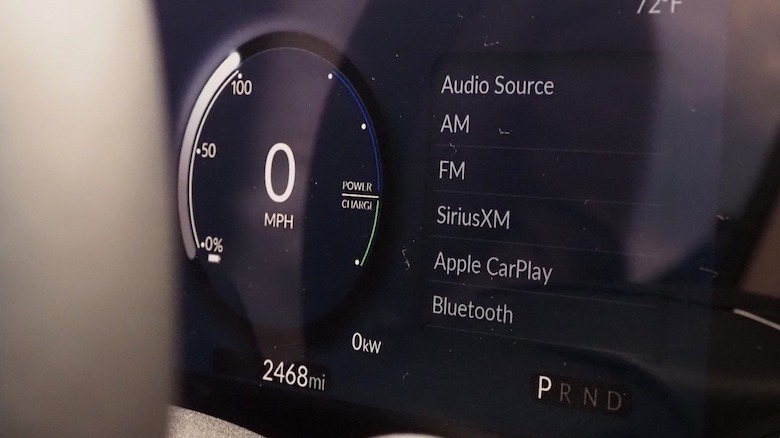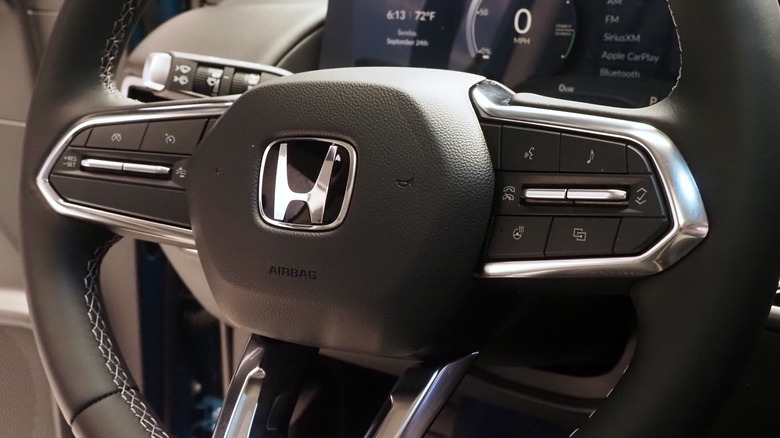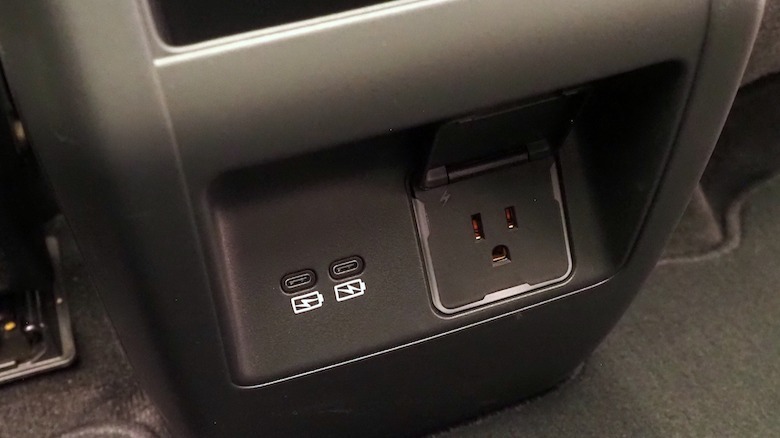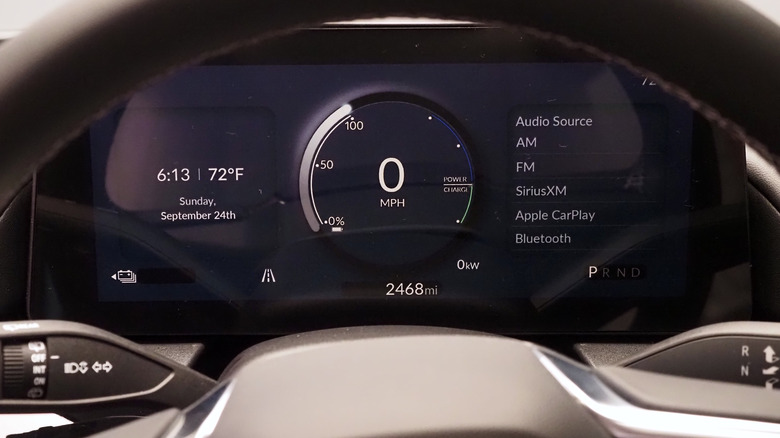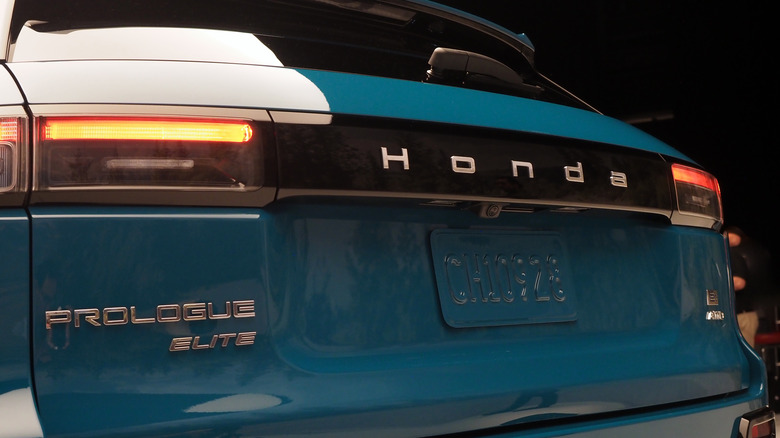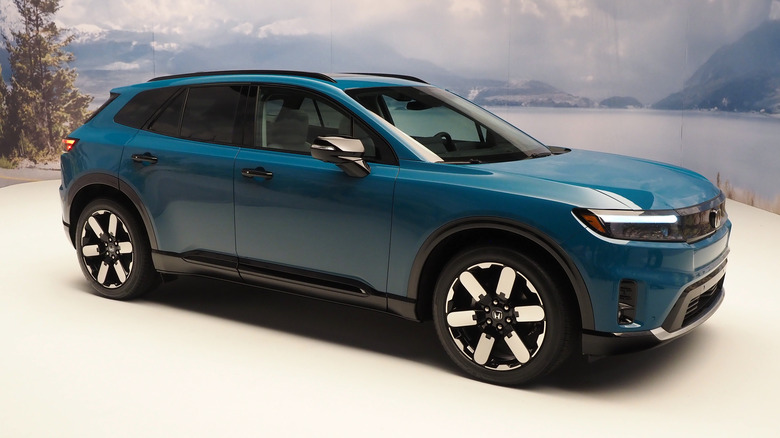2024 Honda Prologue First Look: Weaponizing Normal
There's something decidedly odd about the 2024 Honda Prologue. Usually, when you're an automaker entering an existing market, the strategy is to go big, vocal, and a little bit crazy. Honda's first all-electric SUV, in contrast, is not only positively normal but is hoping people notice that.
Honda isn't immune to the allure of the weird — this is, after all, the company that pumped millions into Asimo — but it can also show equal restraint. When the Prologue arrives in dealerships in early 2024, priced in the upper $40,000s (before credits and incentives), it'll be looking to appeal to EV shoppers aiming to avoid weird aesthetics and a steep learning curve.
Just how well the Prologue nails that became clear at a preview event SlashGear was invited to in Detroit, MI. We'll have to wait a little longer to see how the electric SUV holds up on the road, but from poking around in a flagship-spec Prologue Elite, it's clear that Honda hasn't allowed itself to get distracted.
Making spot the EV trickier
What the Prologue absolutely isn't is a dare-to-be-different EV. From the outside, it's a reasonably handsome and inoffensive SUV that wouldn't look out of place among Honda's other, recent, reasonable handsome and inoffensive SUVs. Inside, it eschews the electric trend toward wildly gadgety dashboards and flashy gimmicks like motorized controls. A Honda Passport owner wouldn't be left cold, frightened, and confused by slipping into the driver's seat of the Prologue.
That's all entirely by design. This is "Honda's first volume EV," Jon Wong, development leader for Prologue, points out. As such, it has to feel like, drive like, and even accelerate like a Honda.
It also meant that, while the Prologue — and the upcoming 2024 Acura ZDX — may be based on GM's Ultium platform, as part of a deal between the two automakers around electric vehicle architecture sharing, every touch point is Honda not, say, Chevrolet or Cadillac. That includes recent Honda mainstays, like physical buttons and knobs for climate control, volume, and other interface features. If you didn't know about the collaboration, you probably wouldn't realize it had happened by looking at the Prologue inside or out.
Design with a practical goal
Instead, you'll likely spend more time trying to figure out just where the new electric SUV fits in terms of Honda's existing range. It's around eight inches longer than a CR-V and about five inches wider, giving it roughly the same footprint as a Passport. The Prologue is lower than the Passport, however, and its nearly 122 inch wheelbase is almost a foot longer.
Honda's proportions are familiar, however, though while there's a "grille," it's now black plastic. Another piece on the tailgate introduces new badging: a spelled-out Honda rather than the "H" logo. There's also the new "e:" badge, which we'll also likely see featured on the upcoming EVs based on Honda's own e:Architecture electric platform from 2025. 19-inch wheels are standard; 21-inch upgrades come on the flagship Elite trim.
The lengthy wheelbase pays serious dividends inside, whether you're the driver, passenger, or a piece of luggage. Both rows of seats are spacious, though the Prologue's flat floor feels a little higher than you might expect in the second row. That's the downside of squeezing a big battery pack underneath. The rear seats split 60/40 to fold flat but also support two angles of recline.
As for the trunk, there's up to 25.2 cu-ft of space back there with all five seats up, expanding to 57.7 cu-ft with the rear seats folded. Honda opted not to give the Prologue a frunk, or front trunk, using that space for mechanical and electronic packaging instead. However, there's a 0.8 cu-ft cargo bin under the trunk floor, which effectively replicates what a frunk would've offered.
Three trims, two drivetrains, one battery
Honda is keeping things simple with trims. The 2024 Prologue will be offered in three configurations — EX, Touring, and Elite — all with the same 85 kWh battery pack. Full power specifications haven't been revealed yet, but we do know the all-wheel drive configurations (optional on EX and Touring, standard on the Elite) will get 288 horsepower and 333 lb-ft of torque. Expect less from the front-wheel drive Prologue.
Range numbers, too, are yet to be fleshed out. So far, Honda is saying that the 2024 Prologue FWD is expected to hit 300 miles on the EPA's test cycle. The Prologue AWD will undoubtedly trade some range for its extra power and traction.
Of the three, only the Prologue Elite will get a dedicated Sport mode. That promises to sharpen the throttle and steering response, as well as leave the steering firmer and increase braking power.
Well-equipped if not outrageously lavish
Prologue EX trim gets an 11-inch digital instrument cluster display, an 11.3-inch infotainment touchscreen running Google embedded with wireless Apple CarPlay and Android Auto, and a wireless phone charger. The Prologue supports not only projecting Google Maps into the driver's display but also Apple Maps if your iPhone is connected. There are also heated front seats, cloth upholstery (in either back and charcoal or charcoal and light gray), and the Honda Sensing suite of active safety features.
Stepping up to the Prologue Touring trim adds leather seats and a leather-wrapped steering wheel, a memory driver's seat, auto-dimming interior rearview mirror, and front and rear parking sensors. It also gets a power tailgate, a panoramic glass roof — which opens and has a retractable sunshade — and a 12-speaker Bose Premium Audio system with a subwoofer.
Only the Prologue Elite gets a 7x3 inch head-up display, heated steering wheel, and ventilated front seats. It also switches up the leather upholstery with three different colors of perforated hide. Standard across the board are plenty of cubbies and storage nooks, including a front console with cupholders that can each hold 32-ounce bottles and a tray for two smartphones side-by-side.
Still room for improvement
Despite the familiarity, there's some clever stuff going on behind the scenes. Full over-the-air (OTA) update support is baked in, with a roadmap of new features to be wirelessly delivered also planned. The same integrated modem will be used to link certain vehicle settings — like HVAC, audio, and seat position preferences — to a driver's ID, rather than on a per-vehicle basis, so they can be loaded into a new vehicle later on.
There are a couple of disappointing omissions, though. The most obvious absence on the spec sheet is GM's Super Cruise, its hands-free highway driving system. Acura will offer that on the ZDX, but Prologue owners will have to make do with the regular adaptive cruise control bundled in as part of Honda Sensing.
Then there are the places to plug in around the cabin. Two 3.0A USB-C 45W ports for the front row, and a further two for the second row, are standard, as is a 12V outlet in the front; the Elite trim gets a single AC outlet for the second row, too. Sadly, there's only a 12V outlet in the trunk, which will make charging up your Motocompacto E-Scooter tricker than it needed to be. You were planning on buying a Motocompacto, right?
Charging options for EV newbies and old-hands alike
That's a shame, because otherwise Honda has given a whole lot of thought to charging — albeit for the Prologue and not its suitcase-like E-Scooter. As with its ZDX cousin, all buyers of the electric SUV will get to choose from three charging packages, likely making the selection depending on how new to EV ownership they are.
One package will include a Honda-branded 11.5 kW Home Charging Station, $100 in public charging credit, plus $500 in credit for Honda Home Electrification (HEE) That's the automaker's online marketplace — open, in fact, to not only Honda and Acura drivers, but any body — designed not only to sell EV accessories but services like charger installation and, later on, solar and other green energy products. It's worth noting that this package means the Prologue doesn't come with its own portable charger, as most EVs typically would.
For that, there's the second package. That includes Honda's 7.6 kW Portable Charging Kit — with interchangeable 110V and 240V plugs — plus $300 in public charging credit and $250 in HEE credit. Finally, for those who don't need charging hardware and are more concerned about plugging in while on the road, the third package is simply $750 of public charging credit.
Figuring out EVs' biggest challenge
Where, exactly, that public credit can be used is part of a complex situation that Honda is doing its best to make straightforward. That bundled credit — $100, $250, or $750 package-depending — will be at EVgo locations; Prologue buyers will also get 60 kWh of Electrify America charging, too. All three trims of the EV support up to 155 kW DC fast charging, meaning roughly 65 miles added every 10 minutes plugged in.
Although the Prologue has a CCS charge port, by using an adapter, drivers will be able to connect at Tesla Supercharger stations in 2024. Honda's first NACS port-equipped EV will launch in 2025.
Then there's the so-far-unnamed joint venture between Honda, BMW, GM, Hyundai, Kia, Mercedes-Benz, and Stellantis, which plans 30,000 chargers across North America by 2030. That's a fairly heady target, mind, considering the first of those locations isn't expected to go live until summer 2024.
It'll be the job of the HondaLink Smartphone app to try to corral all that into one straightforward place. It'll show charger locations and often real-time status, support sending a station destination directly to the Prologue's navigation system, and give a read on just how much bundled credit drivers have left. Honda is also promising payment integration so that EV owners won't need a phone full of different, network-specific apps simply to get charging.
Pitch perfect Prologue
Frankly, if Honda can make the public charging experience less of the usual borderline-nightmare it has been for non-Tesla drivers, then the 2024 Prologue will already be off to a winning start. Indeed a no-drama experience is pretty much the biggest selling point for Honda's first all-electric SUV.
It is intentionally, explicitly normal. A description that Honda itself not only acknowledges, but embraces. That normalcy has apparently gone down well with dealers, too, who quite probably were living in fear of another Clarity-style oddball to pitch to potential EV shoppers wanting a Honda badge on something that just happens to run on electricity.
There is a time and a place for whimsy in electrification. Honda's first mainstream, all-electric SUV is not that. That restraint may not look as glitzy as some EVs on the market or establish fresh records for range, acceleration, or equipment. Rather than a drawback, however, that's only a selling point for the 2024 Honda Prologue as it attempts to bring a comfortable flavor of zero-emissions driving to the mass market.
